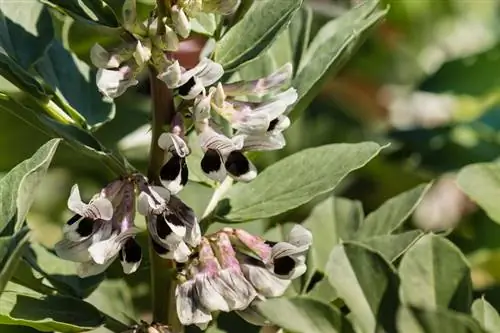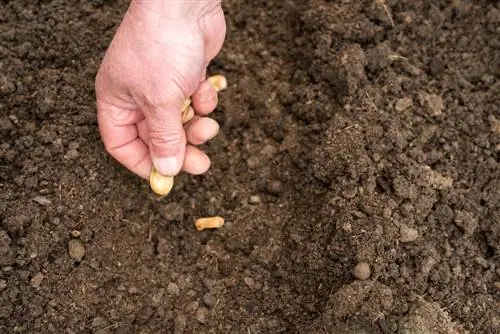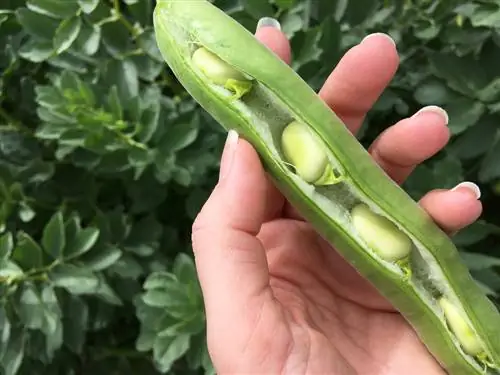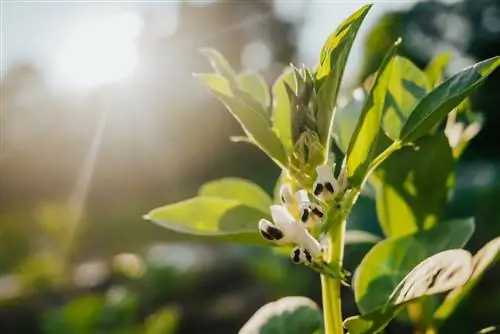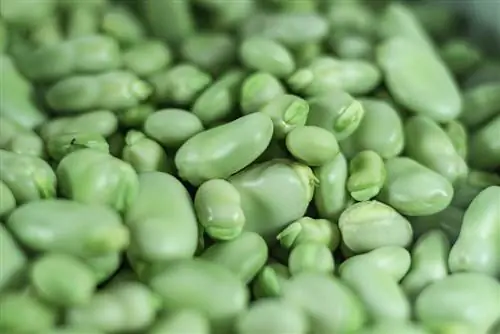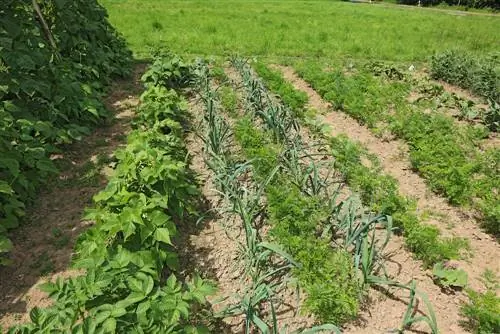- Author admin [email protected].
- Public 2023-12-16 16:46.
- Last modified 2025-06-01 06:02.
Broad beans, broad beans or broad beans are also sometimes called and have been somewhat forgotten in German vegetable beds in recent years. Nevertheless, the broad beans taste extremely delicate. If you would like to enjoy the delicious seeds very soon, you should plant the - as the Central German term means - savvy (because they are thick and plump) beans in the ground now.
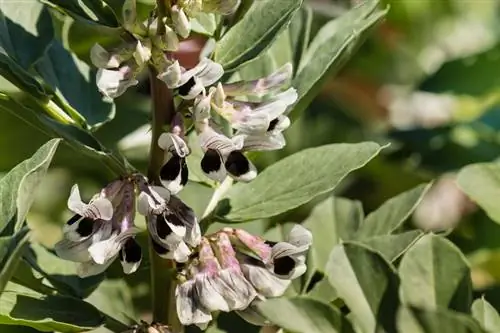
First of all: The peel definitely cannot be used and is inedible. After harvesting, only the pods are broken open and the kernels inside are removed. That's why, from a botanical point of view, the lush green fruits that ripen are not beans, but are a type of vetch.
The species that grow excellently in our latitudes include the “Hangdown Grünkernig” and the “Triple White”. If you prefer the fruits dark brown in the pot and on the plate: the “red seed” not only has an excellent taste, but can also be easily preserved as a dried bean for the winter.
Cultivation of broad beans
The best harvest results are achieved if the seeds are sown in small pots from mid-January. The young plants can be put out into the open four weeks later and should be planted so that their bales are covered with soil at least two centimeters deep. For direct sowing outdoors, care must be taken to ensure the soil is as dry as possible. Six centimeters deep and a hand's width apart, the plants can then develop perfectly. Between sowing and harvest maturity, broad bean lovers have to be patient for between 75 and 100 days, depending on the weather.
For better eaters: Broad beans with Parma ham
Although peeling can be done relatively quickly with moderately experienced hands, broad beans have a fairly high waste content. As an approximate guideline, if you use two kilograms of freshly harvested pods, you can expect around 500 grams of ready-to-cook kernels. No matter which dish you choose: Due to the high glucoside content, the beans are at least blanched, even if they are sometimes eaten raw, for example in Italian cuisine. We can recommend our recipe idea, which has been tried and tested several times and is guaranteed to be on the family dining table without any allergenic substances.
Ingredients needed for four people:
- 200 grams of bean seeds;
- 30 ml olive oil;
- Two tablespoons of balsamic vinegar;
- Two medium tomatoes;
- A fresh spring onion;
- approx. 150 grams of thinly sliced Parma ham;
- Four basil leaves as well as pepper and sugar to taste;
Preparation in order
1. The broad beans are first blanched in boiling s alted water for about five minutes and then quenched in ice water. After further cooling, the now slightly dry kernels are pressed individually between the index finger and thumb until their outer skin bursts open. At the end, mix all the seeds obtained in this way with the olive oil as well as sugar, pepper and vinegar and let them steep for a few minutes.
2. In the meantime, the two tomatoes are scalded, also quenched and skinned before they are halved, seeded and cut into smaller cubes. Clean and wash the onion and then cut it into rolls. Now rinse the basil, pat dry with kitchen paper and cut into smaller slices.3. Almost done, because now the slices of Parma ham are laid out next to each other on the plates. Beans, diced tomatoes, basil and the onion rolls now just have to be mixed together and distributed on the ham.
We recommend serving oven-fresh baguettes as a satisfying side dish and wish you a bon appetite.

